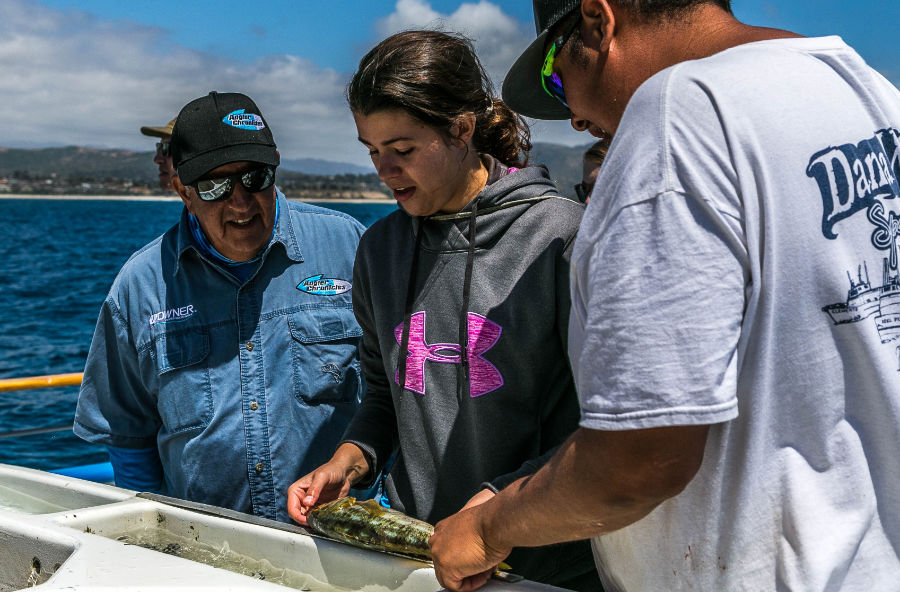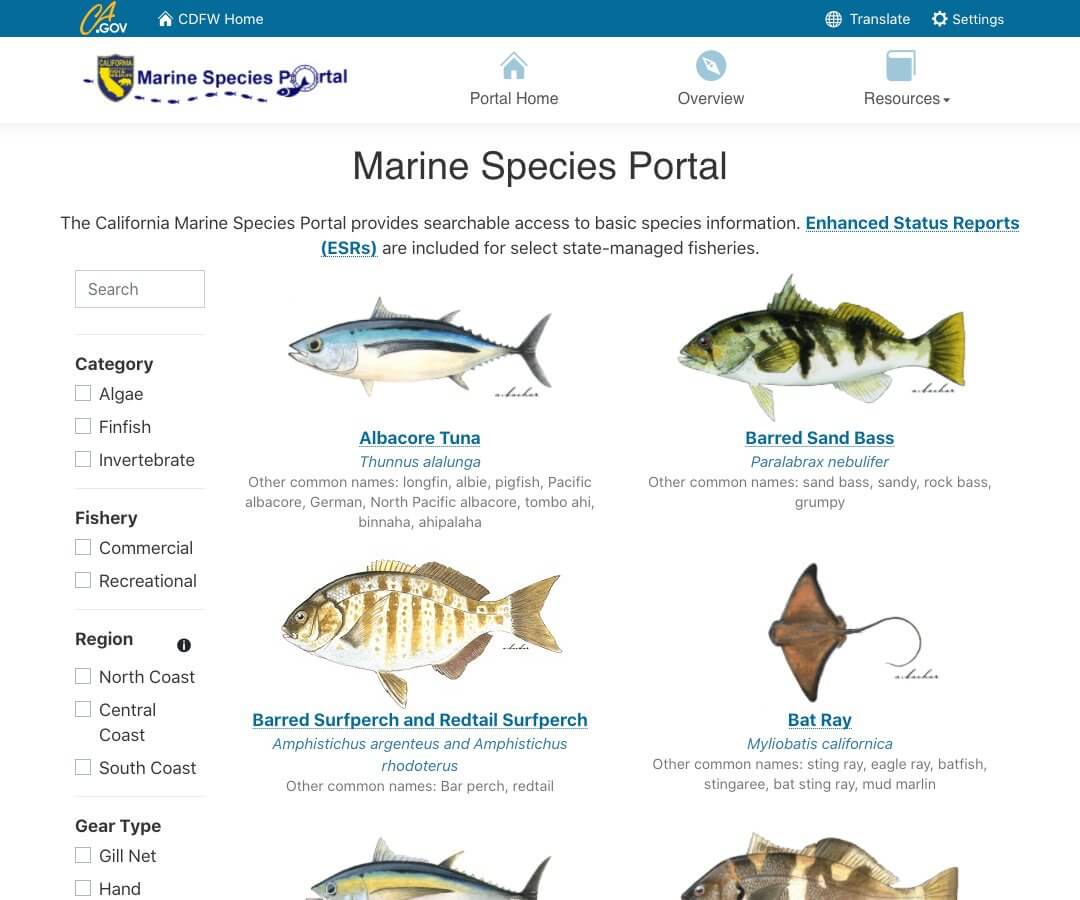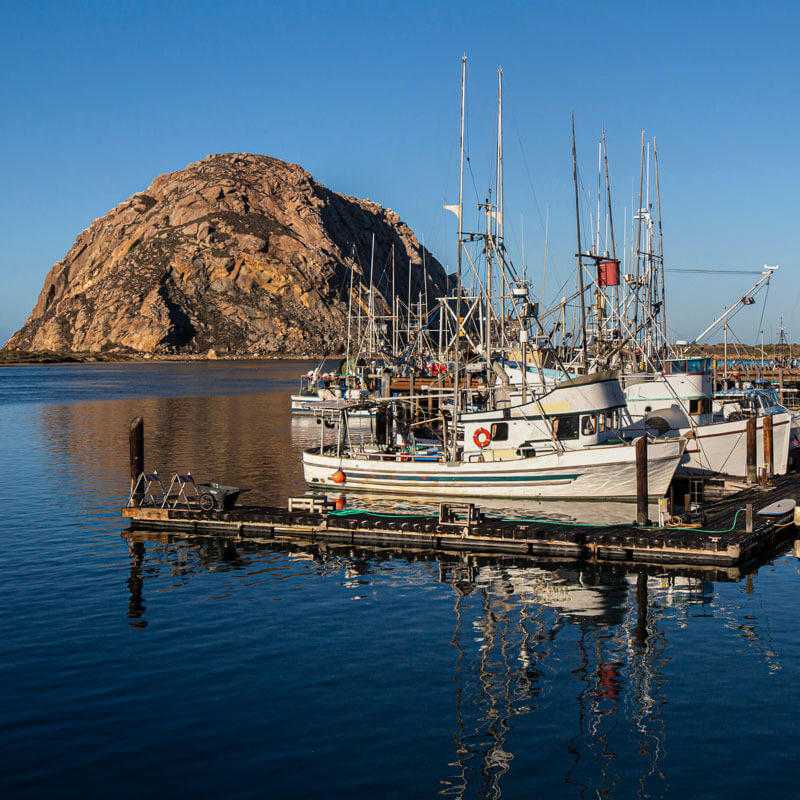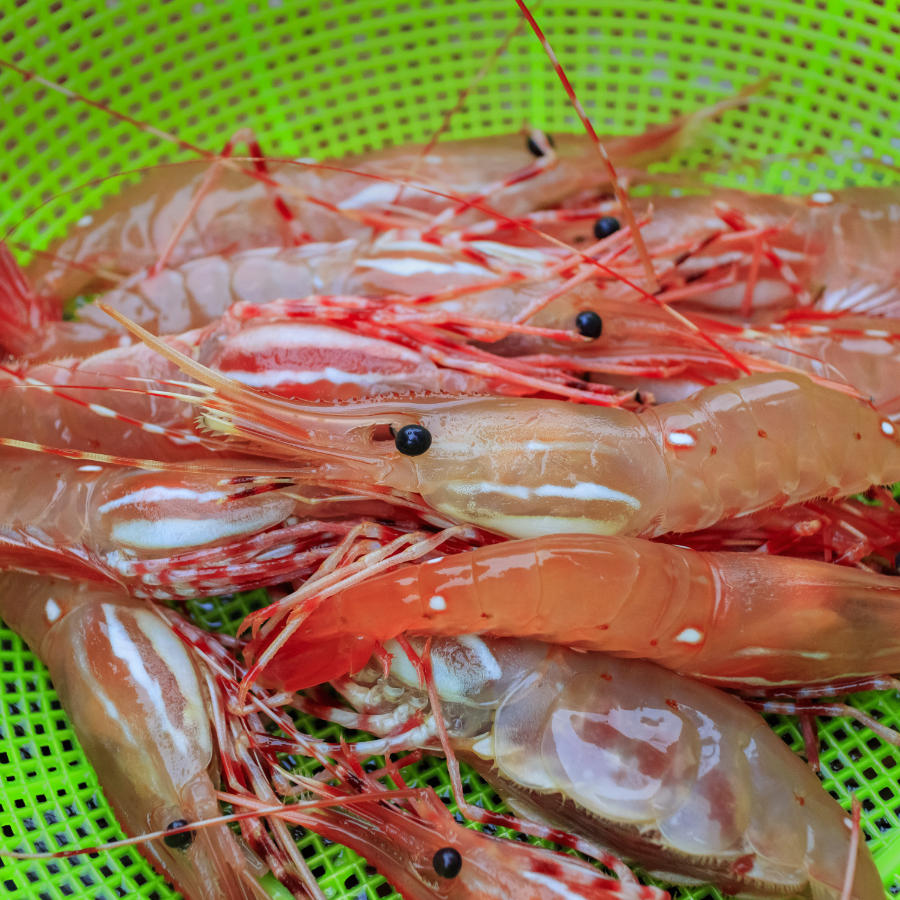Updated: March 2021
Since the Master Plan was adopted by the Fish and Game Commission in June of 2018, the California Department of Fish and Wildlife (Department) and its partners have been working diligently to apply its tools and approaches. Early implementation has focused on foundational efforts such as conducting ecosystem-based prioritization, the development of Enhanced Status Reports (ESRs), and the creation of the Marine Species Portal. These and other efforts are described below. As implementation continues to move forward, progress and current directions will be highlighted on this page.
 California Fishing Passport collaborative partners helping a new angler check the size of her kelp bass to ensure it is larger than the minimum size limit. (CDFW photo)
California Fishing Passport collaborative partners helping a new angler check the size of her kelp bass to ensure it is larger than the minimum size limit. (CDFW photo)
Work plan development
The Master Plan calls for the Department to develop and submit a biennial work plan to the Commission in order to focus and guide Master Plan implementation efforts. In February 2020, the Department submitted an ambitious work plan that included testing new data-limited management tools, the development of a scaled management approach for California Halibut, creation of a web-based fisheries portal, examination of use of restricted access, socioeconomic data collection, bycatch analyses, and climate-related efforts. For further information, please see the Implementation Work Plan (PDF)(opens in new tab).
Enhanced Status Reports
With support from a grant (PDF)(opens in new tab) from the Ocean Protection Council (OPC), the Department oversaw the development of 36 Enhanced Status Reports covering 45 of the state’s most significant commercial and recreational fisheries. These ESRs follow an outline established in the Master Plan and are designed to organize and provide information that is most relevant to management. These ESRs are intended to serve as a basic foundation of MLMA implementation that will increase transparency, improve management, focus external research, and help to make Fishery Management Plan (FMP) development processes more efficient and effective. These ESRs are now part of the Marine Species Portal (below).
Marine Species Portal
Access to current, well-organized information regarding state fisheries is a major challenge for stakeholders and managers. To help address this barrier, the Master Plan called for the development of a web portal to provide easy access to information and help focus research and management efforts. With a grant (PDF)(opens in new tab) from OPC, Department staff worked with Kiefer Consulting to develop the Marine Species Portal(opens in new tab). It is anticipated that additional species, resources, and functionality like mapping and data querying will be added to the portal over the coming years.

Prioritization
While the Master Plan included an interim species priority list, it also directed the Department to apply a more comprehensive framework described in Chapter 3 of the plan. The comprehensive approach includes consideration of a fishery’s bycatch and habitat impacts. Results for finfish were presented (PDF)(opens in new tab) to the Commission in December 2019, and results for invertebrates were presented (PDF)(opens in new tab) a year later in November 2020. For combined, summary results, see Results of Fisheries Prioritization. This general ranking will help guide the Department’s scaled management efforts well into the future.
Scaled management
Now that the Department has identified priority fisheries, it is beginning to assess the management needs of each. Currently, the Department is scoping a complex FMP for California Halibut, a basic FMP for Pink Shrimp, and potential targeted rulemakings for other species. Along with ESRs, these approaches represent the full continuum of management approaches described in Chapter 4 of the Master Plan.
Applying data limited approaches
To help inform management decisions, the Department and its partners have been piloting a software-based tool known as the Data-Limited Toolkit (DLMtool) that helps identify data limited assessment methods, trade-offs between alternative management regimes, and optimal management approaches given specified goals. Over the last three years, the Department partnered with the Natural Resources Defense Council and the University of British Columbia to apply the DLMtool to eight California fisheries. Fishery-specific results (PDF)(opens in new tab) will be described in ESRs and may help shape management in the future. Additionally, the expertise gained through the process will increase Department capacity to evaluate the status of species and potential management approaches.
 Fishing fleet at Morro Bay. (Shutterstock photo)
Fishing fleet at Morro Bay. (Shutterstock photo)
 Spot prawns. (Shutterstock photo)
Spot prawns. (Shutterstock photo)
Peer review
The Master Plan provides guidance on how to conduct scientific peer review under the MLMA. In 2020, the Department and the Ocean Science Trust (OST) applied this guidance in the external peer review of the California Halibut stock assessment(opens in new tab).
Data modernization
The Department is working to upgrade and modernize its fisheries data collection efforts through the recent transition to electronic landing receipts (E-tix), the development of electronic logbooks, and piloting the use of cameras on vessels to track bycatch. The goal is use technology to improve catch accounting and better manage state fisheries.
Socioeconomics
The Department is partnering with Sea Grant to analyze and begin making better use of the socioeconomic data it already has. This work will help identify and prioritize the additional data collection that is needed and will help inform a 5-year socioeconomic workplan to guide future efforts. In addition, the Department and its partners are developing web-based port profiles for 13 of California’s primary fishing ports. These profiles will help inform management and help better anticipate community impacts from climate change.
Climate
The Master Plan identifies a range of strategies for increasing ecological and socioeconomic resilience. One of these is to explore how increased permit flexibility may help communities adjust to shifting species distributions and abundance. The Department is working closely with partners at OST, Conservation Strategy Fund, and UCSC to assess how existing restricted access fisheries have performed and how the state’s approach to permitting may be reconsidered in light of a changing climate. The Department is also working with partners at NOAA and UCSC to oversee a climate vulnerability assessment (CVA) that will help identify those fisheries and communities that are most at risk from the impacts of climate change.
Partnerships
The Master Plan emphasizes the importance of partnerships as a means of achieving the MLMA’s goals and there are a number of partnership-based projects underway. One such effort is a collaboration between the Department and the Sea Cucumber Dive Association aimed at exploring the viability of catch limits and a minimum size limit. The Department and the Association are working on an at-sea sampling program to help identify an appropriate limit and to modernize data collection by testing an electronic logbook. The video below details these efforts.
Video about collaborative efforts by fishermen, state agencies, non-profit organizations, and academic researchers for a sustainable sea cucumber fishery.
Photo at top of page: Fishing vessel off the California coast. (Shutterstock photo)